How to water a jade plant – and why underwatering might be better for its health
These succulent plants don't always need a lot of water
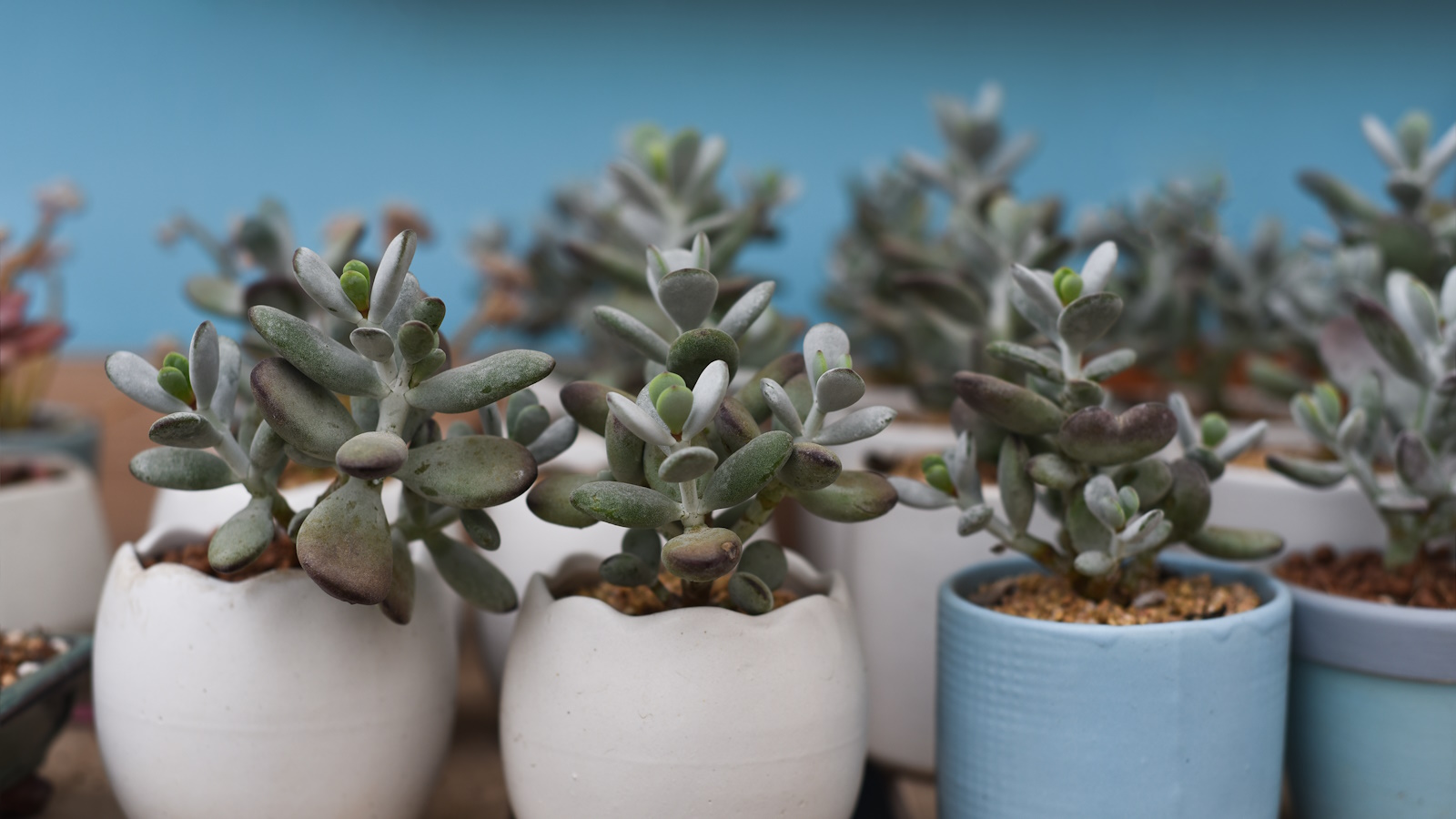

Jade plants are known for being one of the best indoor plants to have in your home. They are relatively easy to care for as they only really need water and light to flourish. Jade plants, scientifically known as Crassula ovata, are succulents that require a less hands-on approach compared to other houseplants.
Jade plants have the ability to store water in their leaves, preventing them from drying up easily. This means that they need watering less frequently and can survive un-watered and, frankly, ignored for a lot longer.
Knowing how and when to water your jade plant correctly can come down to a few specific elements, such as whether your jade plant is dropping leaves or changing color. There are a number of ways to tell if it’s due a drink.
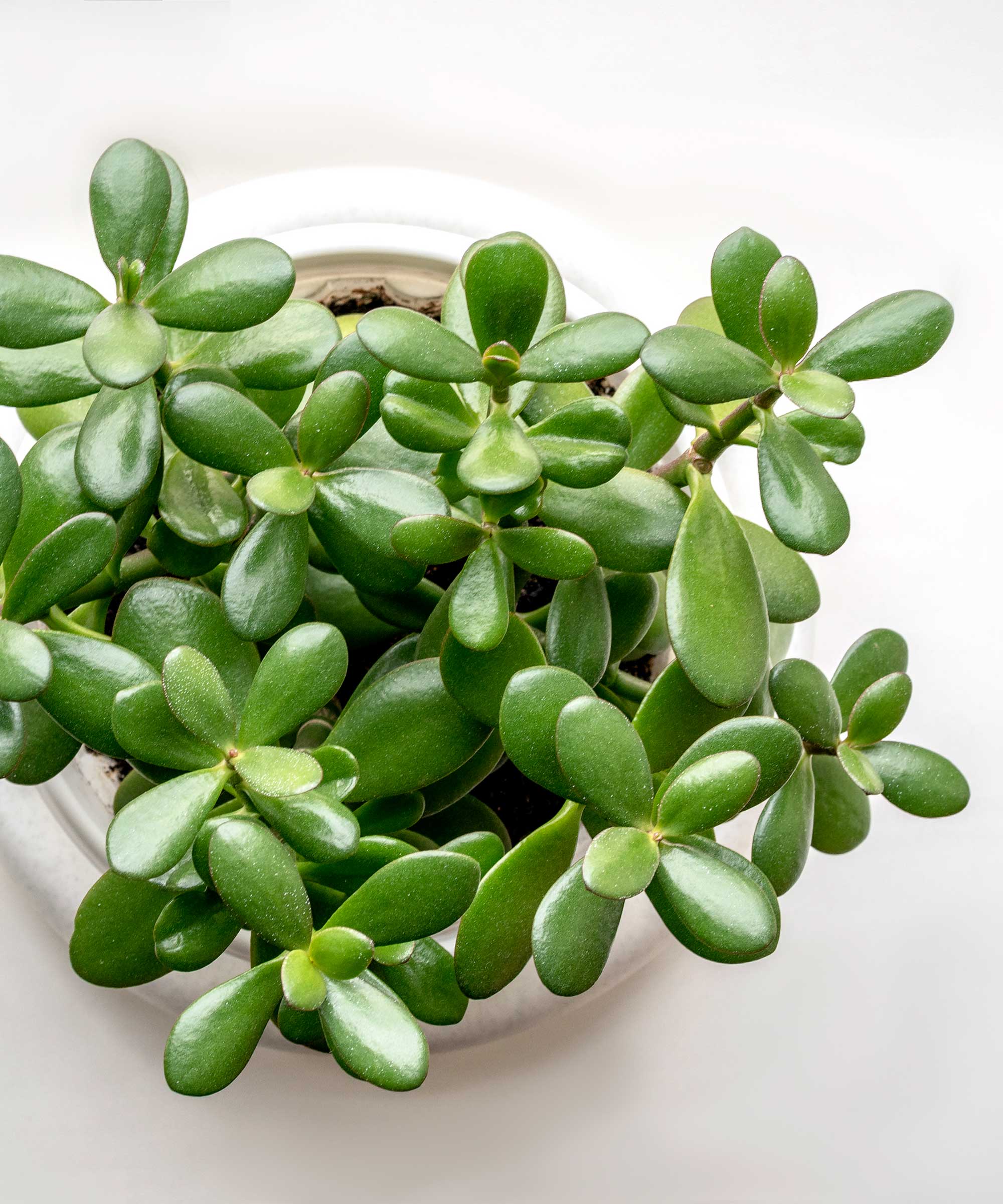
When to water a jade plant
We asked houseplant specialists for their best tip and tricks when it comes to knowing how and when to water your jade plant at home.
Check the Soil
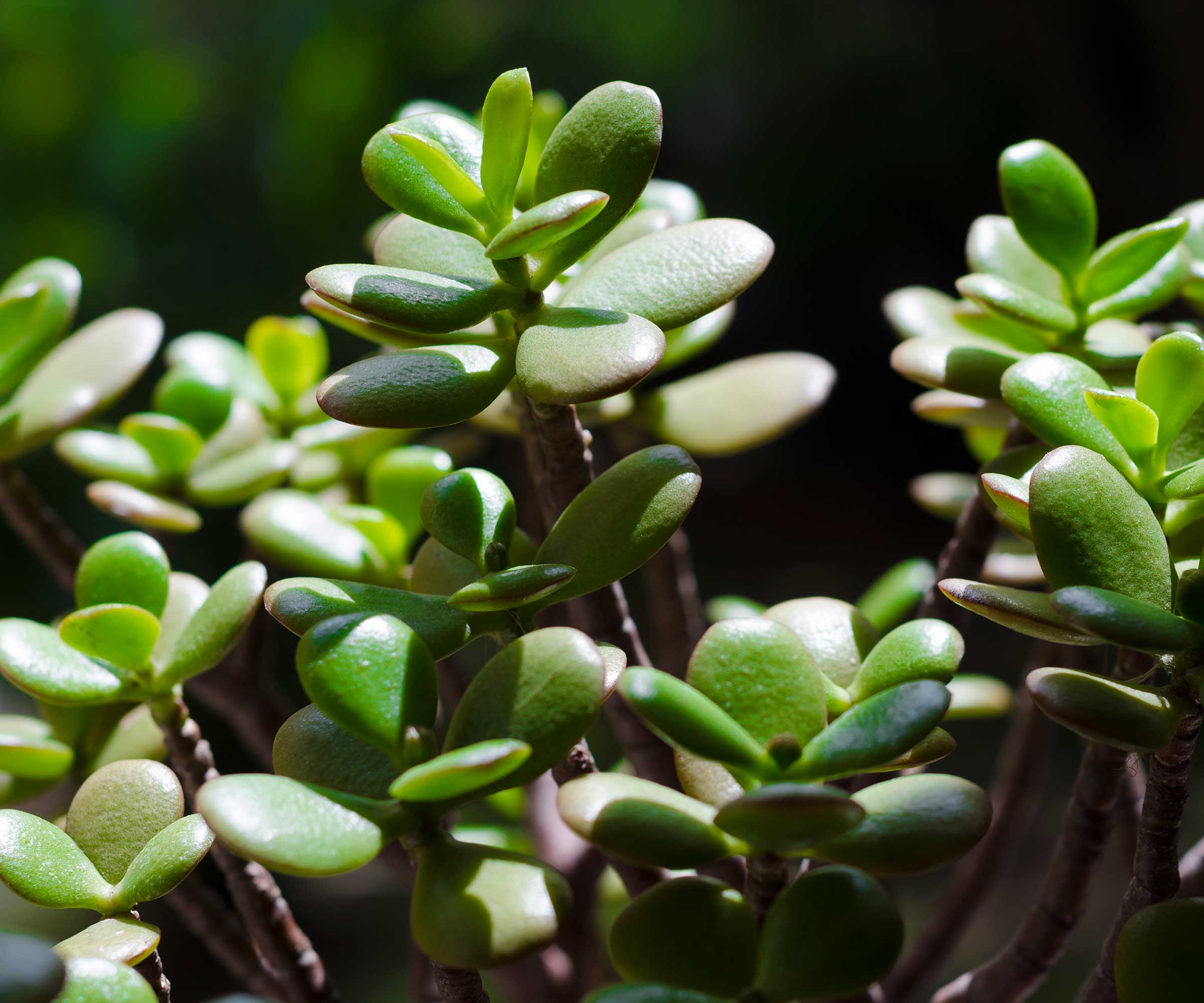
Many indoor plants love to grow in damp soil, however, jade plants are one of the few that do not like these conditions, advises Kayla Gajdascz, founder of Mental Houseplants.
‘This is because the leaves of these plants are thick and they contain large water tanks, so you often find it is better to underwater these plants rather than overwater them.’
According to Kayla, watering your jade plant should be done carefully to avoid drowning the plants, and irrigation should be done when at least the top inch of the soil is dry.
One way you can test this is by digging your finger into the soil up to the second knuckle; if it feels dry then it is time to water your plant.

Kayla Gajdascz is the co-founder and president of Mental Houseplants, a company dedicated to spreading the positive impact that plants have on our mental health. One way that the company does this is by partnering with NAMI, the National Alliance on Mental Illness (the Massachusetts chapter), and donating a portion of every sale to them.
Observe the Leaves
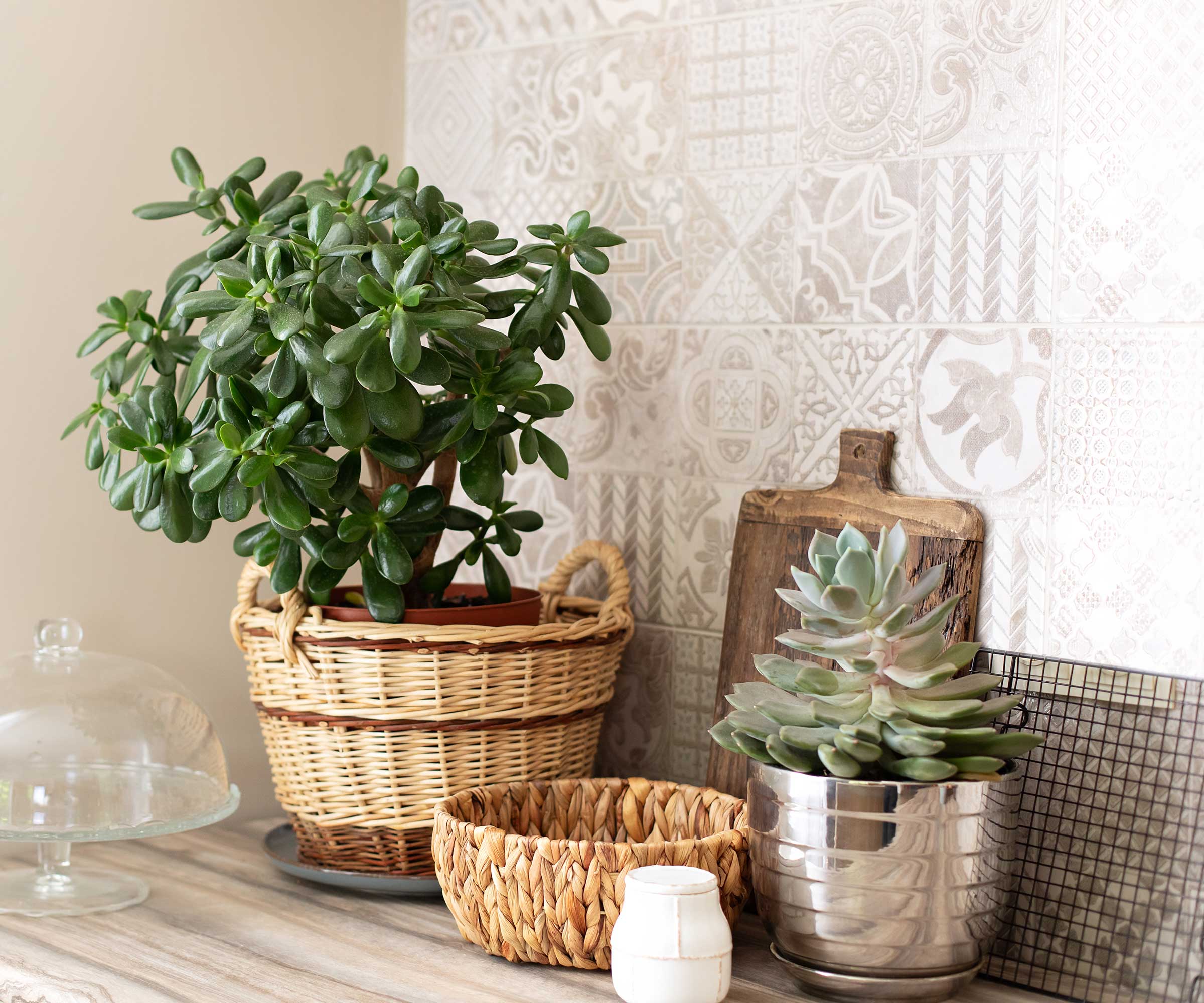
Another way to tell if your jade plant is thirsty is to look at the leaves. If it is in dire need of watering, the edges will incur ripples and the surface will become torn. In some cases of extreme underwatering, the leaves will wither off completely.
When you notice that the leaves are starting to turn on your jade plant move it to a windowsill or somewhere with more natural light and start to incrementally build up its water intake. It is essential that you do this over time and not give it too much water in one go as the plant naturally prefers dryer soil conditions.
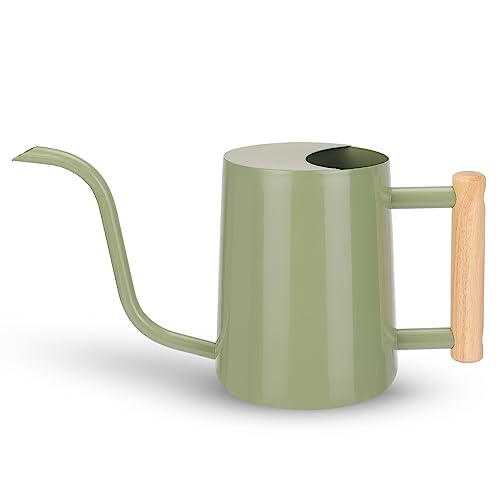
This sage green indoor watering can is super chic, and has a long spout to reach into all your indoor plant pots
How to water a jade plant
There are several ways you can water a jade plant at home, just make sure you don't give it too much to drink in one go.
1. Soak and Dry
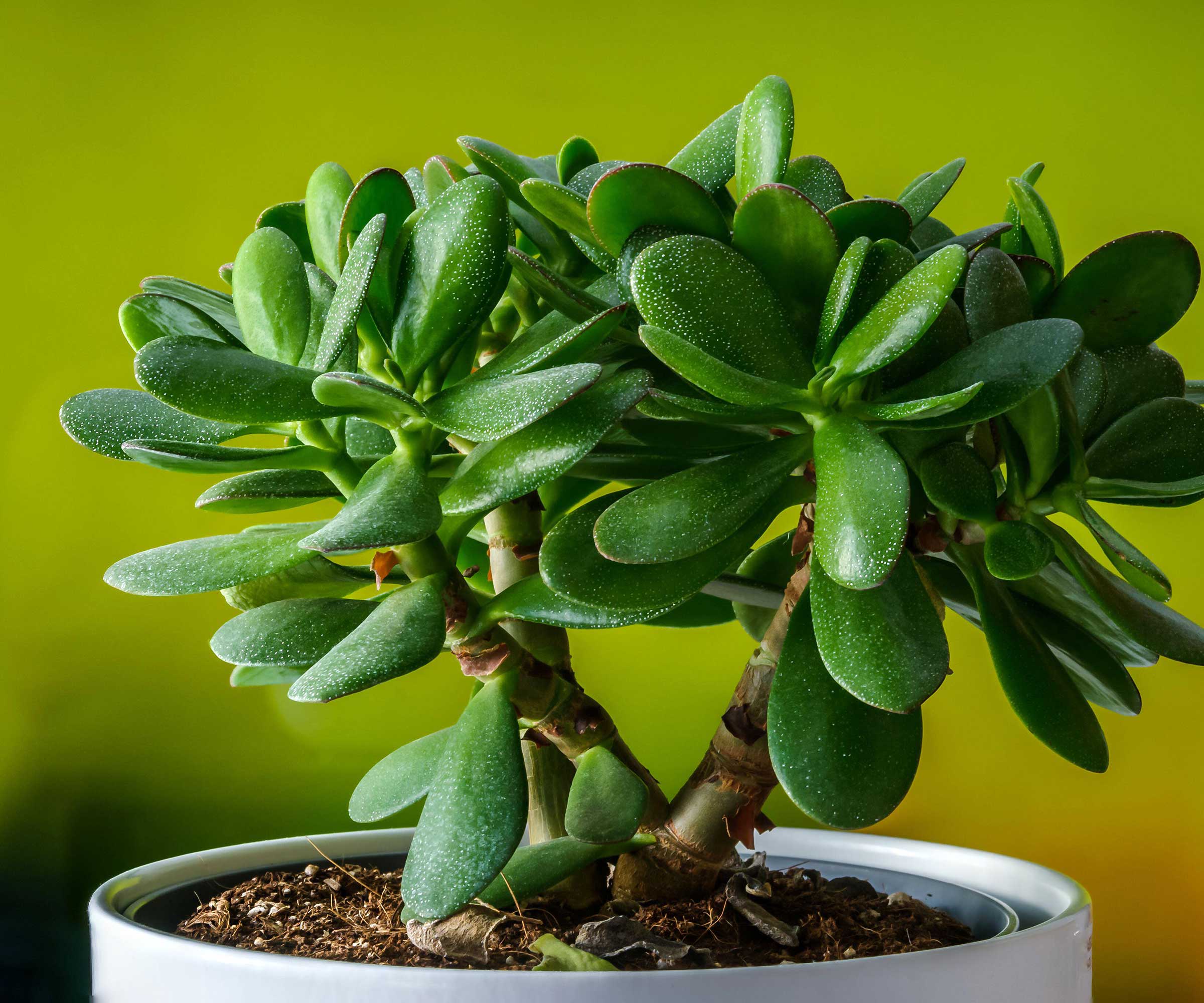
Professional gardener Matthew Wilson suggests the soak and dry method, also known as top watering, when it comes to jade plants as it’s the easiest way for water to travel through the soil and reach the roots.
Pour water slowly onto the soil surface until it drains out of the bottom, when you do this place a small pot saucer, such as the Truedays plant saucer from Amazon, underneath your plant pot to avoid any staining. As water starts to seep into this dish you know that the water has reached the roots of the plant and it is sufficiently watered.
Doing this avoids stagnation of water on the roots since the plant has pulled water and nutrients through its system. Simply empty the saucer out, and try not to leave stagnant water in the saucer for too long as it can expose the plant to moisture logging. To be precise, make sure that the next watering is done when the soil starts to harden.
These clay pots from Amazon would work well with the top watering method as the water will flow easily through the soil and out of the drainage holes. Choosing the right pot for your jade plant can help maintain the correct drainage levels, making it easier to manage its watering schedule.

Matthew Wilson is a professional gardener and owner of Handygardeners.com. Handy Gardeners provides a number of gardening services to its customers including, garden maintenance, landscaping and planting.
2. Slow and Steady
Another method for watering jade plants is the slow and steady method. This usually works best for plants in small pots that have no drainage holes. In this case, the plant should be watered around the surface of the soil with a slow and steady stream until the topsoil layer is damp.
Try not to focus too much water on the leaves as this may lead to the development of fungal diseases.
3. Watering from the bottom

Alternatively, you may want to try the bottom watering method. This method allows water to go straight to the root which is where jade plants need it most.
To bottom-water your jade plant, simply fill up a tray, bowl, or even your kitchen sink with a few inches of water and set your plant's pot in it - just make sure you’ve got ample drainage holes for the water to flow through.
Let your plant soak up the water for a half hour or so. Once it's had a good drink, let any excess water drip away before returning your plant to its favorite spot.
FAQs
Do jade plants like tap water?
In some cases jade plants can be sensitive to salts in tap water, so try watering with filtered or distilled water, available from Amazon if your tap water is causing a negative reaction. You will usually be able to tell if your plant is responding well to the type of water you are giving to it just by looking at it.
Should I water a jade plant less in winter?
Less water is required in winter when the plant is dormant. The watering should be minimal, as rarely as once per month, and even less if the climate where you live is particularly warm. You can mist it from time to time in winter as a substitute for watering, which will keep it adequately hydrated and avoids the risk of overwatering in winter.
When watering your jade plant, the key is to avoid overwatering, which can lead to root rot. Remember that overwatering has to do with watering frequency, not the amount of water you give it at any given time.
Sign up to the Homes & Gardens newsletter
Design expertise in your inbox – from inspiring decorating ideas and beautiful celebrity homes to practical gardening advice and shopping round-ups.

Seraphina is a contributing editor at Homes & Gardens, writing Solved features on organizing and storage. She loves to decorate and also grow her own produce from her home in London. Her previous experience includes working at Women's Health and Fabulous Magazine.
-
 Bryce Dallas Howard's bedroom is the most creative, social space in her entire home – she uses 'conversational seating' to create a multifunctional 'salon'
Bryce Dallas Howard's bedroom is the most creative, social space in her entire home – she uses 'conversational seating' to create a multifunctional 'salon'The actress's bedroom doubles as a home office thanks to its clever layout and furnishings, proving that this area is much more than a sleep space
By Hannah Ziegler
-
 7 questions to ask yourself before moving house – realtors promise answering these questions will prevent buyer's regret
7 questions to ask yourself before moving house – realtors promise answering these questions will prevent buyer's regretDon’t make your move harder, ask these questions before moving to avoid mistakes
By Chiana Dickson